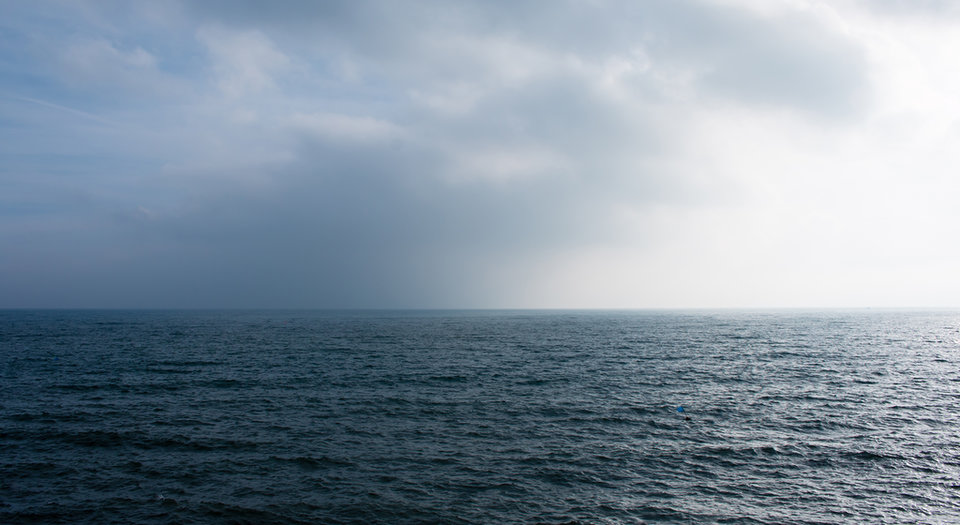
SEA MINING
Conflict over the UK’s deep sea mining licences
Deep sea mining exploration licences granted by the UK Government to Lockheed Martin subsidiary UK Seabed Resources have sparked outcry from environmental organisations. In analysis from these groups, the licences were snubbed as ‘riddled with inaccuracies’, outdated, and unlawful. Scarlett Evans digs deeper to find out the story behind deep sea mining.
V
aried and vast, the ocean floor is largely unexplored terrain that plays host to an abundance of marine life, much of which we’re yet to discover. It is also home to a material many see as the key to unlocking a green future - polymetallic nodules. These small lumps of rock yield the newly valuable minerals of lithium, iron and manganese; materials essential in the creation of renewable technologies.
The largely unknown landscape of the deep seabed has thus far not been a deterrent to companies who have set their sights on reaping the benefits of its deposits, with mining operations already staking their claim on sites – predominantly in the Pacific.
UK Seabed Resources is one such company, and while the licences granted to the firm have only just come to light, the project is not a new one – having been initially approved 10 years ago. The announcement has been met with criticism, with issues ranging from the length of time allotted for exploration to the reported failure to provide an environmental impact assessment.
Licence technicalities aside, the question of whether deep sea mining is the golden ticket to a renewable future remains the subject of intense debate. On the one hand, we need to get the materials for our green future from somewhere; on the other, the full impact of operations on the seafloor are still unknown. So who is right?
What’s wrong with the UK’s licences?
In its report on the issue, Greenpeace raised a multitude of concerns – including the fact that exploration areas detailed in the licences are more than double the size that UK Seabed Resources is permitted by the International Seabed Authority to operate in, as well as the licence length of 15 years, despite 10 years being the current lawful limit in the UK.
The report also claims that campaigners have been trying to access details of the licences for over two years through Freedom of Information requests – requests that have been repeatedly denied.
These licences are riddled with so many errors and inaccuracies that their very lawfulness is thrown into question.
“These licences are riddled with so many errors and inaccuracies that their very lawfulness is thrown into question,” says Louisa Casson of Greenpeace’s Protect the Oceans campaign.
“With problems spanning the high seas to the corridors of power, it’s time for ministers to rethink their deals with deep sea miners,” she adds. “We don’t know whether other governments’ licences are just as bad or even worse, but we do know that supporting deep sea mining is not compatible with the UK’s claims to be a global ocean champion.”
A moratorium on deep sea mining
Indeed, the first deep sea mining test in the Pacific was something of a PR nightmare, with a 25 tonne mining robot lost on the seafloor after its communication cable was severed. While the robot was soon recovered, it has given fodder to the argument that this industry is harmful to marine life.
The report concludes with a call for a moratorium on deep sea mining, a stance that has been echoed by other governments. The lack of data on impacts of this type of mining has not gone unnoticed, with the Papua New Guinea Government, Fiji, Vanuatu, and a number of other Pacific island nations announcing a ban on deep sea mining until more is known of its environmental risks and impacts.
Even the companies investigating nodule extraction have admitted there is a lack of information on mining’s impacts on marine life.
In March of this year, Google, BMW, Volvo, and Samsung similarly announced they will not support deep sea mining in their supply chains.
Even the companies investigating nodule extraction have admitted there is a lack of information on mining’s impacts on marine life. Canadian miner DeepGreen released a white paper on its mining intentions, in which it says it is “difficult to say with certainty that biodiversity and species impacts from deep-sea nodule collection would be less significant than those observed and measured on land”.
Given this uncertainty, the question that arises is how do we manage growing demand for renewable tech without jeopardising marine or terrestrial life?
A need for information
Professor Steinar Løve Ellefmo, an associate professor from the Department of Geoscience and Petroleum at the Norwegian University of Science and Technology, says that the renewable revolution needs to source materials from somewhere.
“The Green Deal requires minerals and metals. Given the increased demand (driven by population growth and living standard increases for example), much of these minerals and metals must be mined. We should increase focus on recycling, but that will not be enough to meet the future demand. Where should you get the minerals and metals from? Onshore? Offshore? Space?”
Where should you get the minerals and metals from? Onshore? Offshore? Space?
“Deep sea mining offers an opportunity, but it is a controversial one,” he adds. “Much because there is a lot we do not know. That we do not know should not hinder us in collecting data, investigating, and understanding. The mineral resource potential of the deep sea is uncertain and there are uncertainties about suitable technologies and the environmental consequences. We must reduce these uncertainties.”
It is a necessity that Ellefmo is not alone in wanting.

A need to develop guidelines for deep sea mining
A paper authored by researchers from the Centre for Social Responsibility in Mining, Sustainable Minerals Institute at the University of Queensland found there are ‘significant data gaps’ in deep sea mining.
The team argues that as knowledge from terrestrial mining is not always transferable to the ocean, the latter should be considered and governed as an entirely new industry type – bringing with it the need to investigate further.
Paper co-author Dr Anthony Kung says that such uncertainties are compounded by the fact that there are no commercial deep sea mining projects that could function as a precedent – either in terms of project design, or the impacts of design on environment and people.
“There's no current commercial extraction, the closest we've come is the Solwara One project in Papua New Guinea,” he says. “That was licensed in 2011, and it just never got off the ground.”
You've got uncertainties squared – we don't have established technologies and we don't fully understand deep sea ecosystems.
“There are two main risks. What's down there, and what’s the extraction method?” he adds. “You've got uncertainties squared – we don't have established technologies and we don't fully understand deep sea ecosystems.”
When asked what should be done to progress this industry in a sustainable and safe way, Kung highlights the need to develop novel guidelines for deep sea mining.
“There is a real need to develop a way for companies to navigate what is responsible mining when it comes to deep sea mining,” he says. His paper similarly concluded with the need for regulators to develop a better understanding of the ESG risk landscape before progressing with projects.
For some, the ocean floor seems the only viable option to meet the burgeoning demand for battery technologies, with expansion of terrestrial sites endangering sites of biodiversity risk.
Yet it seems clear that without sufficient understanding of the terrain we’re heading into, we could easily cause more harm than good, and transparency in the regulation process is the only way to ensure best practices are maintained as we forge ahead into the deep.
